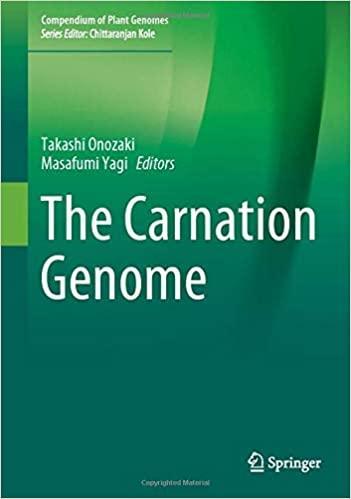The Carnation Genome (Compendium of Plant Genomes) 1st ed. 2020 Edition
21 $
Delivery time: Maximum to 1 hours
The Carnation Genome (Compendium of Plant Genomes) 1st ed. 2020 Edition
This book summarizes recent advances in carnation genome research for large-scale transcriptome analysis, the draft genome sequence, DNA markers and genome mapping, flower color, mutations, flower opening, vase life, interspecific hybridization, fragrance.
The carnation is one of the most important ornamental flowers in the world, along with the chrysanthemum and the rose. The genus Dianthus is a member of the Caryophyllaceae and includes more than 300 species of annuals and evergreen perennials. Modern carnation cultivars are the product of highly complex hybridization, owing to their long history of breeding.
The carnation genome was first sequenced in ornamentals by a Japanese research team in 2013. The carnation has been genetically improved over the years, and there are various types of flower colors, shapes, patterns, and sizes. In this book, the molecular mechanism of flower color development and the transposable elements responsible for this diversity are studied in detail. In addition, it presents breeding and physiological research for improving flower vase life, one of the most important traits in ornamentals, based on a model of ethylene susceptible flowers. To improve selection efficiency, genomic analysis tools including DNA markers and genetic linkage maps are also highlighted. In closing, the book discusses mutation breeding technologies such as ion-beam irradiation and genetically modified carnations.
Product Details
Product Details
- Publisher : Springer; 1st ed. 2020 edition (December 18, 2020)
- Language : English
- Digital eBook : 205 pages
Related Products
Basic Medical Book
Electrocardiography of Channelopathies: A Primer for the Clinical Cardiologist (PDF)
Basic Medical Book
Creative Thinking And Arts-Based Learning: Preschool Through Fourth Grade, 7th Edition (PDF)
Basic Medical Book
Basic Medical Book
Basic Medical Book
Basic Medical Book
Secrets Of Successful Program Design: A How-To Guide For Busy Fitness Professionals (PDF)
Basic Medical Book
Basic Medical Book
Basic Medical Book
Strength Zone Training: The Most Effective Method For Maximizing Muscle Development (PDF)
Basic Medical Book
Basic Medical Book
Basic Medical Book
Basic Medical Book
Velocity-Based Training: How To Apply Science, Technology, And Data To Maximize Performance (PDF)
Basic Medical Book
All-Pro Performance Training: An Insider’s Guide To Preparing For The Football Combine (PDF)
Basic Medical Book
The Language Of Coaching: The Art & Science Of Teaching Movement (PDF)
Basic Medical Book
Basic Medical Book
2023 & 2024 NIRSA Flag & Touch Football Rules Book & Officials’ Manual, 21st Edition (PDF)
Basic Medical Book
Achieving Excellence: Mastering Mindset For Peak Performance In Sport And Life (PDF)
Basic Medical Book
Neurodegenerative Diseases: Translational Models, Mechanisms, And Therapeutics (PDF)
Basic Medical Book
Breathe, Focus, Excel: Exercises, Techniques, And Strategies For Optimal Athletic Performance (PDF)
Basic Medical Book
Developing Speed (EPUB)- NSCA – National Strength & Conditioning Association, 2nd Edition
Basic Medical Book
Developing Speed – NSCA -National Strength & Conditioning Association, 2nd Edition (PDF)
Basic Medical Book
Personal Best Running: Coach Coogan’s Strategies For The Mile To The Marathon (PDF)
Basic Medical Book
Run Healthy: The Runner’s Guide To Injury Prevention And Treatment (PDF)
Basic Medical Book
Smarter Recovery: A Practical Guide To Maximizing Training Results (PDF)
Basic Medical Book
Basic Medical Book
Adapted Aquatics Programming: A Professional Guide, 2nd Edition (PDF)
Basic Medical Book
Genetics Primer For Exercise Science And Health (Primers In Exercise Science) (EPUB)
Basic Medical Book
Aquatech: Best Practices For Pool And Aquatic Facility Operators (PDF)
Basic Medical Book
Becoming A Sustainable Runner: A Guide To Running For Life, Community, And Planet (PDF)
Basic Medical Book
Breathe, Focus, Excel: Exercises, Techniques, And Strategies For Optimal Athletic Performance (EPUB)
Basic Medical Book
Basic Medical Book
Active Games For Children On The Autism Spectrum: Physical Literacy For Life (PDF)







































































































